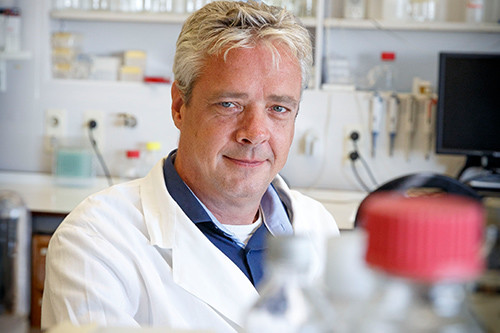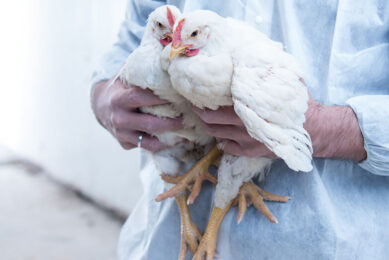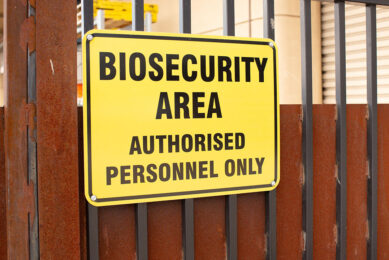Farmers should do their utmost to ensure good hygiene

According to virologist Ron Fouchier, biosecurity is the most important tool the poultry sector can use to keep the avian influenza virus at bay.
Virologist Ron Fouchier (Erasmus MC) stresses that hygiene and biosecurity have become even more important now that the H5N8 avian influenza looms over the poultry industry. “The virus’ prevalence in wild birds is fairly high, so the possibility of introducing the virus is much higher than in 2014. Furthermore, a fair amount of farms are infected now, which means that there is a chance the virus can spread within the sector.”
The Government, the poultry sector, everyone is on top of it. There were however several new outbreaks in the past week. Are there any extra tools available to gain control of the situation?
“I think there is only one word, which we will be repeated many times: biosecurity. Farmers need to make sure that their hygiene measures are in order. This applies to the virus’ introduction from nature and through other farms. I think it is the only way to prevent escalation. We know that these kinds of viruses are highly contagious and we even know that the most well-considered biosecurity measures might not always be enough. You can only do your utmost to keep your hygiene measures in order.”
A German company with grandparent stock has been infected and a breeding company in the Netherlands. These are companies with high hygiene statuses. Can the virus’ pressure reach such high levels in the wild that it can become airborne?
“There is more we don’t know than what we do know and that is difficult to figure out. We found a group of widgeons of which more than 10% were infected. And we know that one little bird dropping can contain up to ten million virus particles. How much is needed for the virus to become airborne and enter the poultry house… I find that difficult to estimate. What we know for sure is that the amount of virus in wild birds is fairly large. I still think that the virus’ airborne spread is mostly an issue between poultry farms, when they are situated close together. There is no proof of airborne spread from wild birds. We scientists are inclined to stick to the facts. I cannot exclude anything, but the main dispersal route is through direct contact with wild birds.
I do not know the specific situations. A grandparent house as a rule is quite hygienic. However, we did see in the past that companies that tried their best at hygiene sometimes made mistakes. These mistakes can be fatal. I have seen poultry farms with bird’s nests right next to the air intake, so bird droppings run right into the ventilation systems. That is not so handy. I have also seen poultry farms with rat or mice infestations. That may not be pleasant, but the farmer can still think ‘I will do something about this in one or two months’. Right now, you need to be very careful with that.”
Is it useful to lockdown areas around the source of an outbreak for 30 days even if no cross contamination has been found?
“Measures are taken based on considerations with advice from scientists, but also based on economic and sometimes personal issues. As scientists, it is easy to say that we need to prevent all contact between poultry farms temporarily. This is absolutely one of the most effective ways to prevent spread. The government concerned must then make an informed decision based on economic, social and scientific interests.”
Is trying to reach a consensus a good thing when a highly contagious virus is on the loose?
“Of course it is. As scientists, it is very easy to say that everything just needs to be locked-down, that there can be zero contact between poultry farmers and that farmers should not walk through pastures first and then through their poultry houses. Practical feasibility also plays a part. This calls for appropriate solutions and they can only be reached when all those involved work together.”













